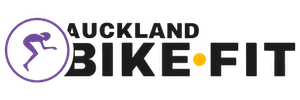Q I get knee pain when running and more recently i have started getting knee pain while cycling! Is this the same issue?
A The most likely cause of your knee pain would be iIliotibial band syndrome (ITB syndrome for short). A tight ITB can cause lots of issues when running such as causing friction and pain to the outside of the knee joint, at the lateral epicondyle – the end of the femur (thigh) bone. The ITB crosses bone and muscle at this point; between these structures is a bursa which should smoothly interact with very little friction. However, when inflamed, the iliotibial band does not interact smoothly, and unfortunately pain is the result. It is very important if you are suffering symptoms of ITB syndrome that you see your physio so that he can give you a program to help fix the problem, Treatment involves lots of stretching, massage and treatment is usually very successful.
Q I get very numb hands when cycling. Is there something i can do to stop this?
A if you are suffering from numbness and tingling in the hands you may need to have your position checked, excessive weight distribution to the front end of the bike puts a lot of pressure on the ulnar nerve which is a nerve that runs the entire length of your arm to the hand, pressure on this nerve will cause tingling and numbness. Correct balance on the bike and good weight distribution between you hands and core muscles are very important. A good padded set of gloves is also a must and remember to keep your arms relaxed when riding as this will help take the road vibration away which can also effect the ulnar nerve.
Q A friend of mine said i need to be able to see my front hub when i am sat on a bike!! is this true?
A This simple way of judging reach was thought of back when bike fitting was in a very primitive form, These days the measurements used for bike set up should be based more on the bodies natural angles and flexibility due to the fact that every person has very different dimensions.
Q I have been told that i have to keep my heels down when i ride but why do i find this difficult no matter how much i try.
A Everybody has different levels of body flexibility especially through the lower leg i.e. calf and the Achilles tendon. The more flexible you are through these areas the more likely you will be able to keep your heels lower when you ride. I would be more focused on keeping your pedal revolutions consistent rather than put too much emphasis on wether your heels are up or down, remember to ride naturally, have your saddle height set with your heel at its most natural point to ensure that your knee is at its optimum angle for comfort and increased power.
Q My Back and shoulders always hurt when i ride my road bike but not my mountain bike! Why is this and does this mean i should stop riding my road bike?
A The set up on your road bike is most likely much lower at the front end than your mountain bike putting excess pressure through your lower back and also straining your traps and shoulders. It is important to remember that the average cyclists drop from saddle to handlebars is between 3cm-7cm depending on their body dimensions and general fitness/flexibility. I would recommend having an experienced bike fitter taking a look at your existing set up and possibly raising your front end to relieve the strain on your back, I am sure this will make a huge difference to your riding enjoyment.
Q I have been told i will fit a 54cm frame, does this mean any frame that size will fit me?
A I wish it was that simple. Unfortunately every bike manufacturer will measure their bikes in a different way, also there are many other factors to consider which are just as important as the general size, these include seat angle (This can alter a top tube length by more than a couple of centimetres in some cases) Head tube length is also an important factor. Somebody with longer leg length and shorter less flexible torso will need a front end that is a lot higher than somebody that has shorter legs and a longer more flexible torso.






